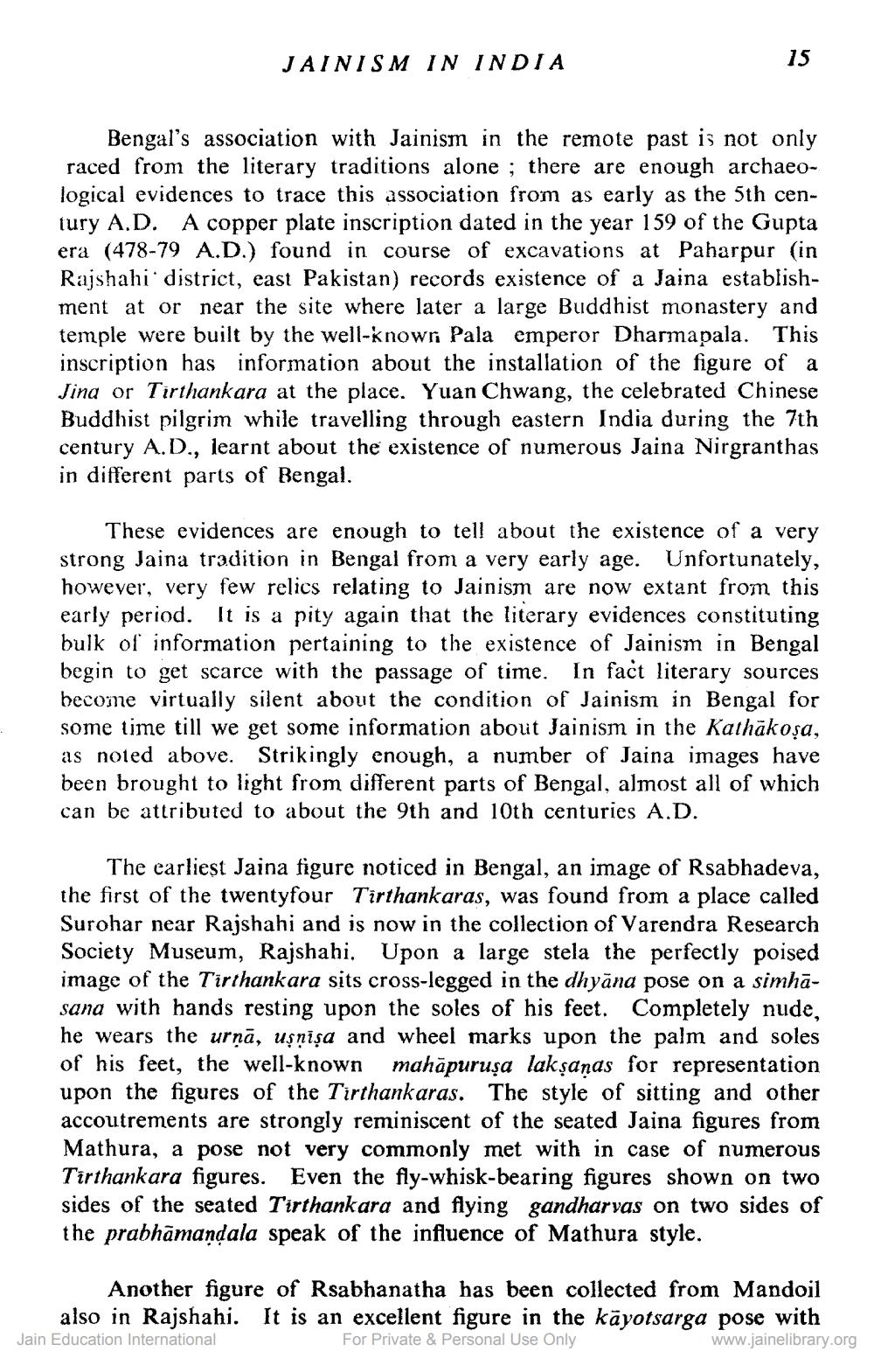________________
JAINISM IN INDIA
15
Bengal's association with Jainism in the remote past is not only raced from the literary traditions alone ; there are enough archaeological evidences to trace this association from as early as the 5th century A.D. A copper plate inscription dated in the year 159 of the Gupta era (478-79 A.D.) found in course of excavations at Paharpur (in Rajshahi district, east Pakistan) records existence of a Jaina establishment at or near the site where later a large Buddhist monastery and temple were built by the well-knowni Pala emperor Dharmapala. This inscription has information about the installation of the figure of a Jina or Tirthankara at the place. Yuan Chwang, the celebrated Chinese Buddhist pilgrim while travelling through eastern India during the 7th century A.D., learnt about the existence of numerous Jaina Nirgranthas in different parts of Bengal.
These evidences are enough to tell about the existence of a very strong Jaina tradition in Bengal from a very early age. Unfortunately, however, very few relics relating to Jainism are now extant from this early period. It is a pity again that the literary evidences constituting bulk of information pertaining to the existence of Jainism in Bengal begin to get scarce with the passage of time. In fact literary sources become virtually silent about the condition of Jainism in Bengal for some time till we get some information about Jainism in the Kathākoșa, as noted above. Strikingly enough, a number of Jaina images have been brought to light from different parts of Bengal, almost all of which can be attributed to about the 9th and 10th centuries A.D.
The earliest Jaina figure noticed in Bengal, an image of Rsabhadeva, the first of the twentyfour Tirthankaras, was found from a place called Surohar near Rajshahi and is now in the collection of Varendra Research Society Museum, Rajshahi. Upon a large stela the perfectly poised image of the Tirthankara sits cross-legged in the dhyāna pose on a simhāsana with hands resting upon the soles of his feet. Completely nude, he wears the urņā, uşnişa and wheel marks upon the palm and soles of his feet, the well-known mahāpuruşa lakşanas for representation upon the figures of the Tirthankaras. The style of sitting and other accoutrements are strongly reminiscent of the seated Jaina figures from Mathura, a pose not very commonly met with in case of numerous Tirthankara figures. Even the fly-whisk-bearing figures shown on two sides of the seated Tirthankara and flying gandharvas on two sides of the prabhāmandala speak of the influence of Mathura style.
Another figure of Rsabhanatha has been collected from Mandoil also in Rajshahi. It is an excellent figure in the kāyotsarga pose with Jain Education International For Private & Personal Use Only
www.jainelibrary.org




